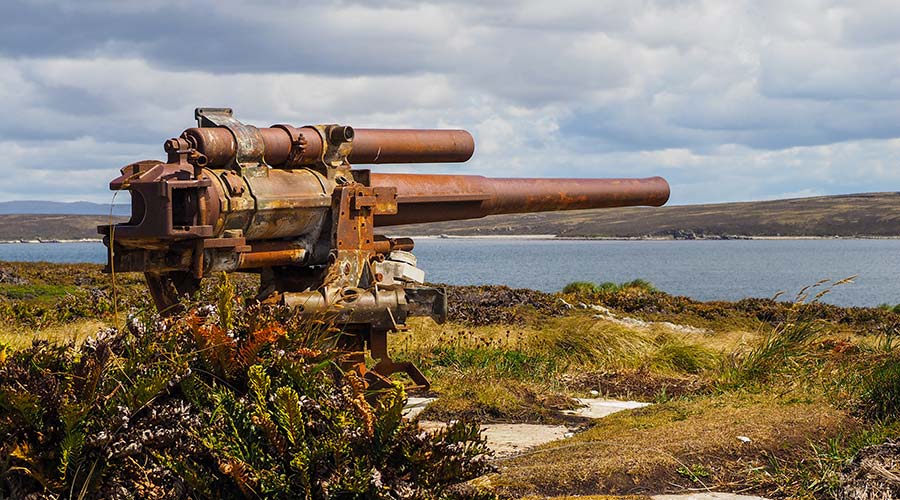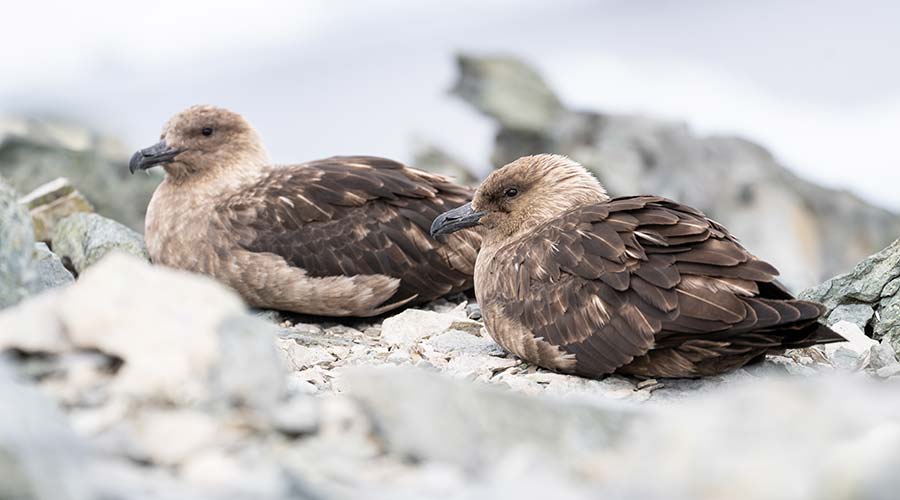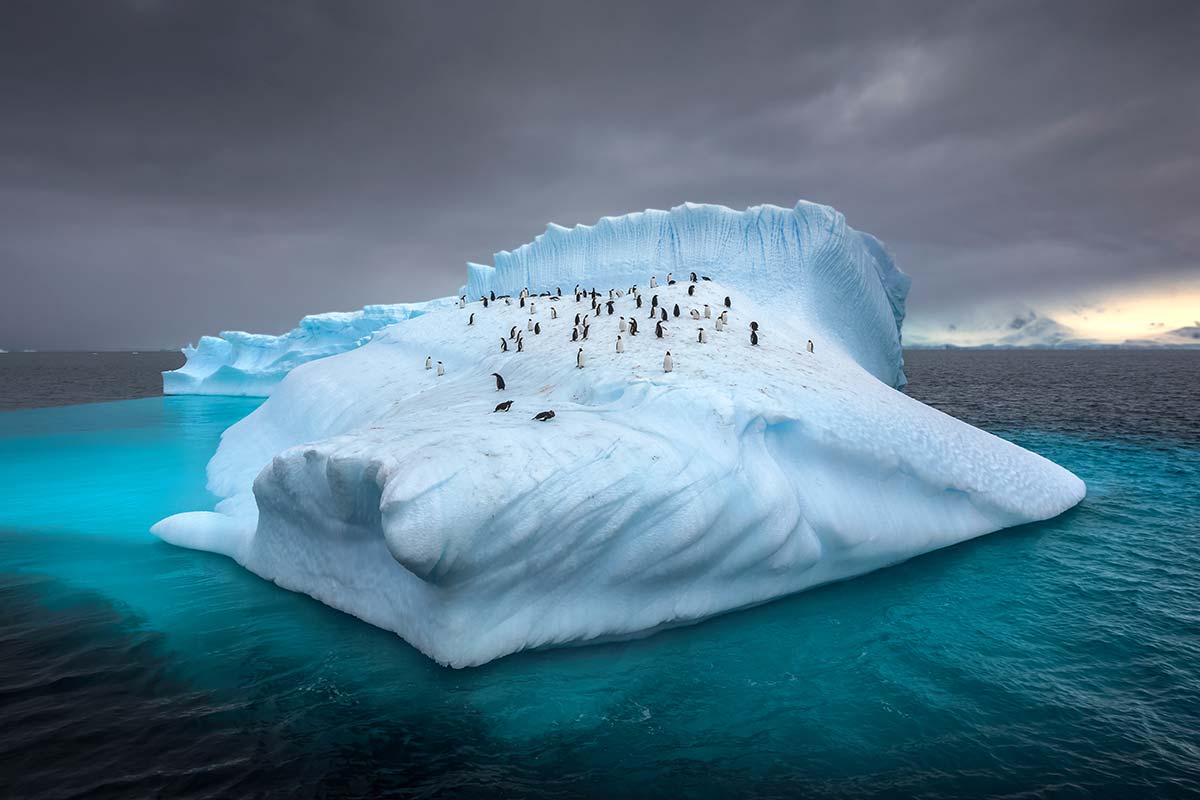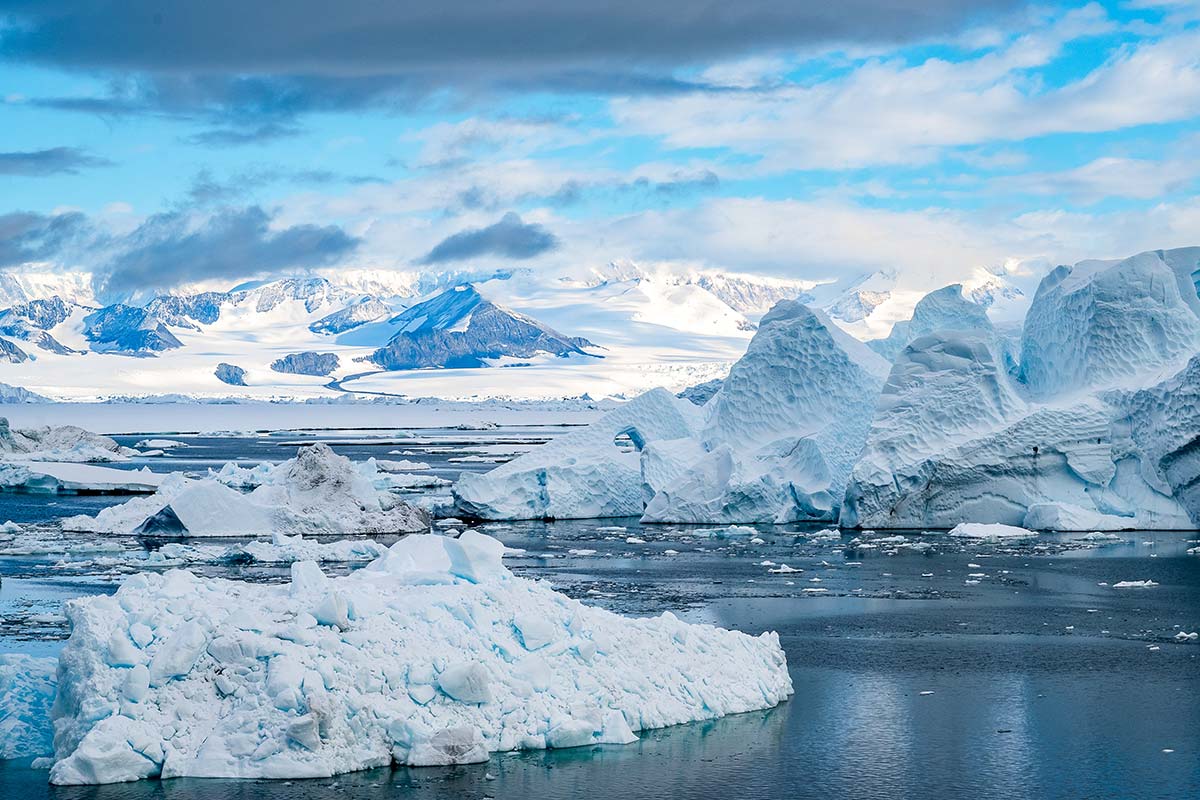The Falklands
Lightly Populated, Densely Fascinating
Off the coast of Patagonia lies the windswept island chain of the Falklands (Islas Malvinas). Comprising the larger islands of East and West Falkland, and 776 smaller islands (only fifteen of which are inhabited), the Falklands are one of the most remote and least densely populated places on Earth, with only 300 residents. The islands are believed to have been uninhabited when British Captain John Strong sailed between the two main islands, naming the strait between them ‘Falkland Sound’, christening the islands with the name they are known by today.

People and Culture
The culture of the Falkland Islands is shaped in equal parts by its British heritage and the islands’ isolation. English is the official language, and British customs like Guy Fawkes Night and the Queen’s Birthday are celebrated. However, the Falklands have developed their own unique identity, with a strong sense of community at its core. Sheep farming has historically played a central role in island life, with the annual Sheep Show highlighting its importance.
As of 2024, there are 3,470 people currently living on the islands. 2,349 of which live in the capital, Stanley. Founded in 1843, Stanley is located on East Falkland, with many of the islands’ inhabitants living on large farms or in rural settlements known as “Camps”, and working in agriculture, fishing, and tourism.
Scant and controversial evidence suggests that the Yamana people of Tierra del Fuego may have reached the islands at some point in the distant past, but the islands are generally believed to have been uninhabited when the first European sailors visited the archipelago in the 16th century. By the 18th century, Spain, France, and Britain established bases, but the islands’ sovereignty remained ambiguous.

An Often-Violent Rivalry
During the 19th Century, the islands were claimed by the newly independent Argentine Republic, whose claim was vigorously rejected by Britain, which had established a government in 1833. Throughout the 20th Century, the sovereignty dispute between Britain and Argentina continued, until tensions over the islands’ sovereignty came to a head in 1982, when the Argentine Military invaded the islands. After 74 days, the islands were reconquered by the British Armed Forces. The Falkland Islanders’ attitude towards Argentina hardened in the wake of the invasion, and the Royal Air Force established the vast Mount Pleasant Airbase outside Stanley in 1983 to deter future military conflict.

Nature and Wildlife
The rugged, hilly terrain of the Falklands is shaped by sandstone, and geologically, the islands have more in common with South Africa than with South America, having separated from Africa 130 million years ago. Some of the oldest rock formations, found in the Cape Meredith area, date back around 1.1 billion years. One of the most distinctive geological features of the islands is the presence of extensive stone runs—vast fields of boulders formed by freeze-thaw processes in past glacial periods.
There are no native terrestrial mammals, but the surrounding nutrient-rich waters and the maze of islands, channels, and inlets support a rich marine ecosystem. Fourteen species of marine mammals, including South American sea lions, elephant seals, orcas, and Humpback whales, are common, while the islands host five species of penguin and 80% of the world’s Black-Browed Albatross. In fact, the Falkland Islands host some of the largest variety of seabirds on Earth, including five species of penguins (Gentoo, King, Magellanic, Macaroni and Southern Rockhopper) that breed on the islands.

A Varying Climate
The Falkland Islands experience cool summers (when you’d be traveling), with average highs around 59°F (15°C) in January and February, and mild winters (when you won’t be), as temperatures drop to about 41°F (5°C) from June to August. Rainfall is relatively consistent throughout the year, ranging from 38 to 50 mm per month. Sunlight hours vary significantly, peaking at up to 8 hours of daylight in January and dropping to around 3 hours during the winter months, especially in June and July. This temperate climate is largely influenced by the surrounding ocean and the islands’ southern latitude.
Popular Expeditions That Include The Falklands
Lorem ipsum dolor sit amet, consectetur adipiscing elit. Vestibulum sed dui purus. In tempor felis nec justo congue consectetur. Pellentesque imperdiet venenatis justo ut scelerisque. Suspendisse ex nulla, vulputate ut dapibus in, dignissim in sem.



